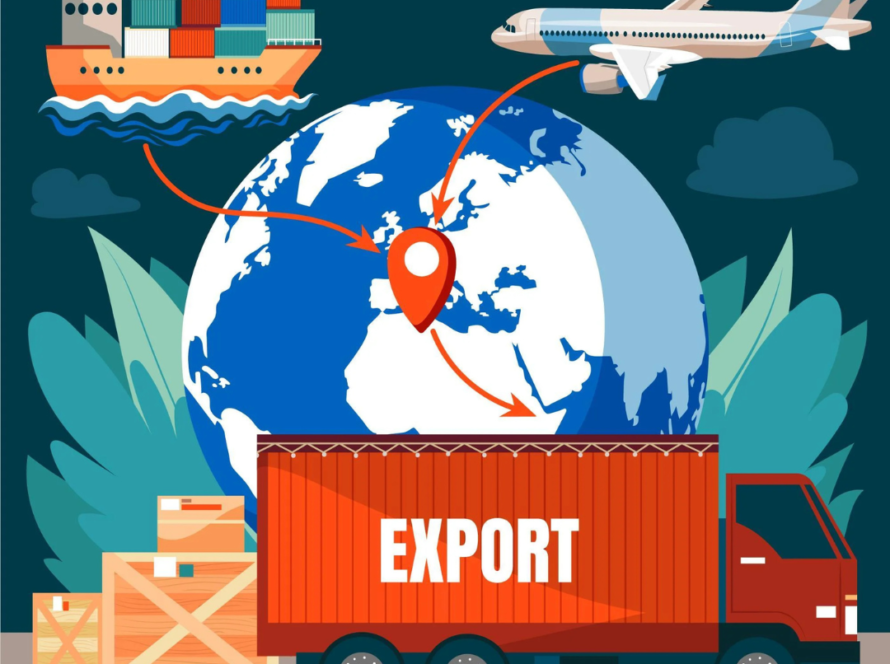How to Start an Import-Export Business in India
India is one of the fastest-growing economies in the world, making it an ideal location for starting an import-export business. With its strategic geographical position and robust trade relations with countries worldwide, the opportunities are immense. If you’re considering venturing into international trade, this guide will help you navigate the essential steps to starting an import-export business in India.
1. Why Start an Import-Export Business in India?
India’s dynamic market offers several advantages for import-export businesses:
- High Demand and Diverse Market: A vast consumer base with diverse needs.
- Government Support: Favorable trade policies and incentives to promote exports.
- Global Trade Relations: Strong ties with countries across Asia, Europe, and America.
- Profit Potential: High-profit margins due to global price differences.
2. Research and Choose Your Niche
Before diving into the business, it’s crucial to identify the right products to import or export. Consider the following:
- Market Demand: Research products with high demand in international markets.
- Profit Margins: Choose products with favorable profit margins and pricing flexibility.
- Trade Regulations: Ensure the products comply with international and Indian trade regulations.
- Competition Analysis: Analyze competitors to understand market dynamics and pricing.
Popular Export Products from India:
- Textiles and Apparel
- Pharmaceuticals
- Gems and Jewelry
- Engineering Goods
- Agricultural Products (Spices, Tea, Rice)
Popular Import Products to India:
- Electronics
- Machinery
- Chemicals
- Precious Metals
- Plastics
3. Register Your Business
To operate legally, you need to register your import-export business in India:
-
Choose a Business Structure:
- Sole Proprietorship
- Partnership
- Limited Liability Partnership (LLP)
- Private Limited Company
-
Register with MCA: If you opt for an LLP or Private Limited Company, register with the Ministry of Corporate Affairs (MCA).
-
Obtain PAN Card: Apply for a Permanent Account Number (PAN) for your business.
-
Open a Current Account: Open a current bank account in the name of your business for international transactions.
4. Obtain Import-Export Code (IEC)
An Import Export Code (IEC) is mandatory for anyone engaged in import or export in India. Here’s how to get it:
- Apply Online: Visit the DGFT (Directorate General of Foreign Trade) website.
- Submit Documents: PAN card, bank account details, and business registration proof.
- Pay the Fee: A nominal registration fee is required.
- Receive IEC: The IEC is issued electronically within a few days.
5. Get GST Registration
To operate an import-export business in India, GST (Goods and Services Tax) registration is mandatory.
- Apply Online: Visit the GST portal and register using your PAN and business details.
- Collect GSTIN: Upon approval, receive a Goods and Services Tax Identification Number (GSTIN).
- File GST Returns: File regular GST returns to stay compliant with tax regulations.
6. Product Sourcing and Supplier Identification
Identify reliable suppliers for the products you wish to import or export:
- Domestic Suppliers: For export-oriented businesses, source from local manufacturers.
- International Suppliers: For import businesses, establish connections with global suppliers.
- Verify Supplier Credibility: Check certifications, production capacity, and financial stability.
- Negotiate Terms: Negotiate pricing, payment terms, and delivery schedules.
Tips for Finding Suppliers:
- Attend trade fairs and exhibitions.
- Use B2B platforms like Alibaba, IndiaMART, and TradeIndia.
- Network with industry associations.
7. Logistics and Shipping
Efficient logistics management is critical for a successful import-export business:
- Choose the Right Mode of Transport: Air, sea, or land, depending on cost, speed, and product type.
- Hire Freight Forwarders: To handle shipping, customs clearance, and documentation.
- Packaging and Labeling: Ensure packaging meets international standards and labeling regulations.
- Insurance: Secure cargo insurance to cover potential losses or damages.
8. Documentation Required for Import-Export
Proper documentation is crucial to ensure smooth customs clearance:
- Commercial Invoice: Details of the products sold, price, and terms of sale.
- Bill of Lading: A contract between the exporter and the shipping company.
- Certificate of Origin: Declares the country where the goods are manufactured.
- Packing List: Detailed list of the shipment’s contents.
- Letter of Credit: Ensures payment to the exporter upon meeting specific terms.
- Customs Declaration: Required for customs clearance and duty calculation.
9. Marketing and Finding Buyers
To succeed in the international market, effective marketing is essential:
- Build a Professional Website: Showcase your products, services, and contact information.
- B2B Marketplaces: Register on platforms like Alibaba, Global Sources, and Exporters India.
- Trade Shows and Exhibitions: Participate in international trade fairs to network and generate leads.
- Social Media Marketing: Leverage LinkedIn and other platforms for B2B marketing.
- Export Promotion Councils: Collaborate with government agencies for market insights and buyer connections.
10. Comply with Trade Regulations
Ensure compliance with international trade regulations:
- Customs Regulations: Follow import/export duties, tariffs, and documentation requirements.
- Trade Agreements: Leverage Free Trade Agreements (FTAs) for tariff reductions.
- Quality Standards: Comply with international quality and safety standards.
- Export Promotion Schemes: Utilize schemes like MEIS (Merchandise Exports from India Scheme) and SEIS (Service Exports from India Scheme).
11. Financial Management and Payment Methods
Efficient financial management is crucial for a profitable business:
- Payment Methods:
- Letter of Credit (LC)
- Advance Payment
- Open Account
- Documentary Collection
- Currency Exchange: Manage currency fluctuations using forward contracts.
- Finance Assistance: Avail export finance from institutions like EXIM Bank and SIDBI.
12. Challenges in Import-Export Business
- Cultural and Language Barriers
- Trade Restrictions and Tariffs
- Logistics and Shipping Delays
- Payment Risks and Currency Fluctuations
13. Conclusion
Starting an import-export business in India presents lucrative opportunities but requires strategic planning, compliance with regulations, and efficient logistics management. By following the above steps, you can establish a successful international trading venture.


